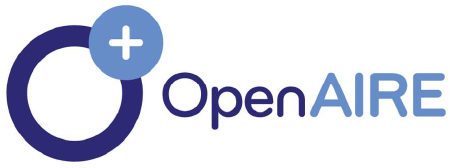THE ROLE OF TECHNOLOGY IN MODERN ENGLISH LANGUAGE TEACHING
Abstract
In recent decades, technological advancement has profoundly reshaped the methodologies used in English Language Teaching (ELT). Digital tools, mobile applications, Artificial Intelligence (AI), and Learning Management Systems (LMS) have transformed language learning into a more interactive, accessible, and personalized experience. This paper explores the historical evolution, current applications, and future potential of technology in modern ELT. It critically assesses digital platforms, mobile-assisted language learning (MALL), AI-driven instruction, blended learning environments, and teacher preparedness. By integrating academic findings and empirical studies, this paper identifies both the opportunities and ethical challenges that come with technological implementation. The study concludes that when used effectively, technology not only enhances learner engagement and motivation but also increases the efficiency and adaptability of language teaching strategies.
References
1. Almeida, F., & Franco, Y. (2011). Technology in Brazilian public schools: Results from São Paulo. Education and Information Technologies, 16(2), 75–92
2. Burston, J. (2013). Mobile-assisted language learning: A selected annotated bibliography of implementation studies 1994–2012. Language Learning & Technology, 17(3), 157–225.
3. Davies, G. (2005). Computer Assisted Language Learning: Where are we now and where are we going? UCALL Conference.
4. Deterding, S., Dixon, D., Khaled, R., & Nacke, L. (2011). From game design elements to gamefulness: Defining "gamification". In Proceedings of the 15th International Academic MindTrek Conference. ACM.
5. Godwin-Jones, R. (2011). Emerging technologies: Autonomous language learning. Language Learning & Technology, 15(3), 4–11.
6. Graham, C. R. (2006). Blended learning systems: Definition, current trends, and future directions. In C. J. Bonk & C. R. Graham (Eds.), Handbook of blended learning: Global perspectives, local designs (pp. 3–21). San Francisco: Pfeiffer.
7. Hao, Y., Lee, K. S., Chen, Y., & Sim, C. (2020). Developing an adaptive learning platform using student modeling and AI techniques. Computers & Education, 147, 103777.
8. Hockly, N. (2012). Digital literacies. ELT Journal, 66(1), 108–112.
9. Hubbard, P. (2009). General Introduction. In P. Hubbard (Ed.), Computer Assisted Language Learning: Critical Concepts in Linguistics (Vol. 1). Routledge.
10. Krashen, S. D. (1982). Principles and Practice in Second Language Acquisition. Pergamon Press.
11. Kumpulainen, K., & Lipponen, L. (2010). Technological infrastructures and pedagogical innovations in Finnish schools. In OECD’s Inspired by Technology, Driven by Pedagogy.
12. Levy, M., & Stockwell, G. (2006). CALL Dimensions: Options and Issues in Computer-Assisted Language Learning. Routledge.
13. Loewen, S., Isbell, D., & Sporn, Z. (2020). The effectiveness of app-based language instruction for developing receptive linguistic knowledge and oral communicative ability. Foreign Language Annals, 53(2), 209–233.
14. Mikalef, P., Krogstie, J., Pappas, I. O., & Giannakos, M. (2018). Investigating the effects of big data analytics capabilities on firm performance. Information & Management, 55(7), 1031–1043.
15. Mishra, P., & Koehler, M. J. (2006). Technological pedagogical content knowledge: A framework for teacher knowledge. Teachers College Record, 108(6), 1017–1054.
16. Ministry for Development of Information Technologies and Communications of the Republic of Uzbekistan. (2020). Digital Uzbekistan 2030 strategy.
17. Plump, C. M., & LaRosa, J. (2017). Using Kahoot! in the classroom to create engagement and active learning: A game-based technology solution for eLearning novices. International Journal of Economics and Management Engineering, 11(9), 548–551.
18. Selwyn, N. (2016). Education and Technology: Key Issues and Debates (2nd ed.). Bloomsbury Publishing.
19. Stockwell, G. (2010). Using mobile phones for vocabulary activities: Examining the effect of the platform. Language Learning & Technology, 14(2), 95–110.
20. Sweller, J. (1988). Cognitive load during problem solving: Effects on learning. Cognitive Science, 12(2), 257–285.
21. Trust, T., & Whalen, J. (2020). Should teachers be trained in emergency remote teaching? Lessons learned from the COVID-19 pandemic. Journal of Technology and Teacher Education, 28(2), 189–199.
22. Ushioda, E. (2011). Motivating learners to speak as themselves. In G. Murray, X. Gao, & T. Lamb (Eds.), Identity, motivation and autonomy in language learning (pp. 11–24). Multilingual Matters.
23. Vygotsky, L. (1978). Mind in Society. Harvard University Press.
24. Wang, A. I. (2015). The wear out effect of a game-based student response system. Computers & Education, 82, 217–227.
25. Warschauer, M. (1996). Motivational aspects of using computers for writing and communication. In M. Warschauer (Ed.), Telecollaboration in Foreign Language Learning (pp. 29–46). University of Hawaii Press.






















